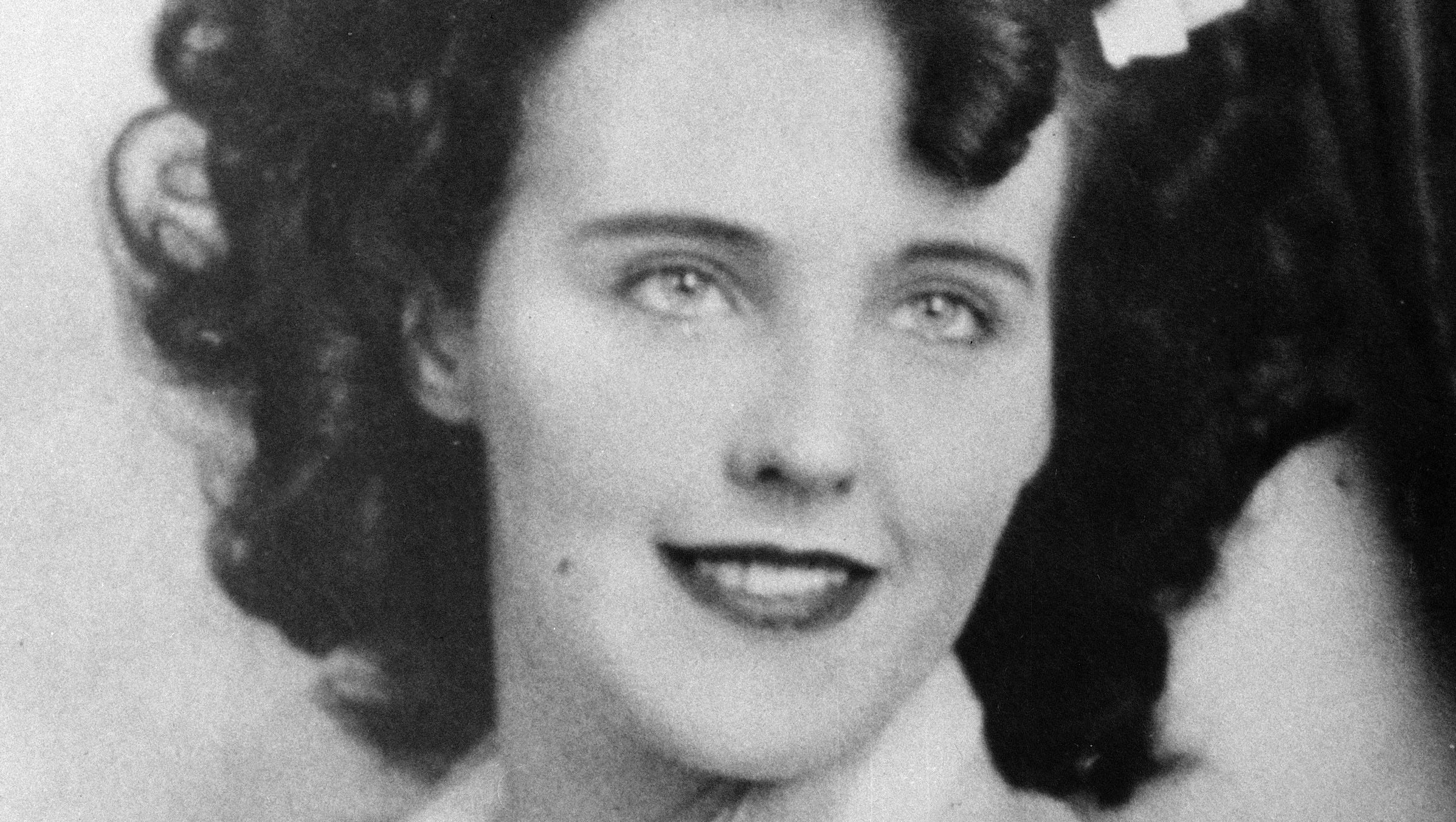Unveiling The Truth Behind Black Dahlia Murder Photos: A Chilling Journey
There's something about the Black Dahlia case that continues to haunt our collective consciousness decades after the tragic event. The Black Dahlia murder photos have become an eerie symbol of one of the most infamous unsolved crimes in American history. This case isn't just about a murder; it's a puzzle that has baffled investigators and captivated true crime enthusiasts worldwide. From the moment Elizabeth Short's body was discovered, the world was drawn into a mystery that remains unsolved to this day.
The allure of the Black Dahlia murder photos lies in their ability to transport us back to a time when the world was simpler, yet darker. These images serve as a grim reminder of the fragility of life and the complexity of human nature. As we delve deeper into this case, we find ourselves questioning not only the circumstances surrounding Elizabeth Short's death but also the societal factors that contributed to her tragic fate.
While the Black Dahlia murder photos have become iconic, they also represent a chilling reality – the vulnerability of individuals in a world that often overlooks the marginalized. In this article, we'll explore the details of the case, the significance of these photos, and the lasting impact they've had on true crime culture. So, grab a cup of coffee, settle in, and let's unravel the mystery together.
- The Fan Bus Your Ultimate Guide To Riding The Craze
- Skinwalker Ranch Current Status Unveiling The Mysteries Of The Most Haunted Place
Understanding the Black Dahlia Case
The Gruesome Discovery
On January 15, 1947, a horrifying discovery was made in a vacant lot in Leimert Park, Los Angeles. It was there that Elizabeth Short's body was found, gruesomely mutilated and divided at the waist. The scene was so shocking that it would go down in history as one of the most infamous crimes of its time. The Black Dahlia murder photos captured the grim reality of the crime scene, leaving investigators and the public alike in disbelief.
Elizabeth Short, a 22-year-old aspiring actress, had become the victim of a brutal and senseless act of violence. Her lifeless body was posed in a manner that suggested a level of meticulous planning by the perpetrator. The Black Dahlia nickname was coined by the press, partly due to her dark hair and partly inspired by a 1946 film noir called "The Blue Dahlia." This nickname would forever be associated with her tragic story.
The Impact on True Crime Culture
The Black Dahlia murder photos have played a significant role in shaping modern true crime culture. They represent a pivotal moment in history when the media began to sensationalize crime, turning it into a form of entertainment. This case marked the beginning of a new era in crime reporting, where the public's appetite for grisly details fueled the industry's growth.
- Dafne Keens Upcoming Projects The Rising Starrsquos Exciting Journey
- Inigo Montoya Actor The Man Behind The Myth
These photos, though disturbing, have become a source of fascination for true crime enthusiasts. They serve as a window into the past, offering a glimpse into the investigative techniques of the time and the societal attitudes toward crime and justice. As we examine these images, we're reminded of the importance of remembering the victims behind the headlines.
The Life and Times of Elizabeth Short
Biography of Elizabeth Short
Before she became the Black Dahlia, Elizabeth Short led a relatively ordinary life. Born on July 29, 1924, in Boston, Massachusetts, she was the second of five daughters in her family. Growing up during the Great Depression, Elizabeth faced numerous challenges, including her father's disappearance when she was a child. This event would shape her worldview and influence her future decisions.
As a young woman, Elizabeth dreamed of becoming an actress, a pursuit that would eventually bring her to Los Angeles. However, her aspirations were cut short by the tragic events that unfolded in 1947. Below is a table summarizing key details about Elizabeth Short's life:
| Full Name | Elizabeth Short |
|---|---|
| Nickname | Black Dahlia |
| Date of Birth | July 29, 1924 |
| Place of Birth | Boston, Massachusetts |
| Date of Death | January 15, 1947 |
| Cause of Death | Murder |
Her Journey to Los Angeles
Elizabeth's move to Los Angeles was driven by her desire to pursue a career in acting. She arrived in the city in 1943, hoping to make a name for herself in the entertainment industry. During her time in LA, she worked various odd jobs while trying to land auditions. Despite her efforts, she struggled to break into the competitive world of Hollywood.
Her life in Los Angeles was marked by a series of relationships with military personnel, some of whom would later become key figures in the investigation. These connections added layers of complexity to the case, making it even more challenging for investigators to piece together the events leading up to her murder.
The Role of Media in the Black Dahlia Case
The Sensationalization of Crime
The Black Dahlia murder photos played a crucial role in how the media covered the case. In the late 1940s, newspapers were hungry for sensational stories that would capture the public's attention. The Black Dahlia case fit the bill perfectly, with its gruesome details and mysterious circumstances. The media's portrayal of the case helped turn it into a national sensation, drawing in readers from across the country.
While the media's coverage brought much-needed attention to the case, it also had unintended consequences. The sensationalism surrounding the Black Dahlia murder photos sometimes overshadowed the human tragedy at its core. As the public consumed these images, they began to view Elizabeth Short not as a person but as a symbol of the era's fascination with crime and celebrity.
Public Reaction and Speculation
The release of the Black Dahlia murder photos sparked a wave of public speculation and theories about the identity of the killer. People from all walks of life weighed in on the case, offering their own interpretations of the evidence. This outpouring of interest was both a blessing and a curse for investigators, who were inundated with tips and leads, many of which proved to be dead ends.
Despite the media's efforts to solve the case, the identity of the Black Dahlia's killer remains unknown to this day. This lingering mystery has kept the case alive in the public consciousness, ensuring that Elizabeth Short's story continues to be told.
The Investigation and Its Challenges
The Initial Investigation
When the Black Dahlia murder photos were first released, investigators were faced with the daunting task of piecing together the events leading up to Elizabeth Short's death. The crime scene offered few clues, and the lack of forensic technology at the time made the investigation even more challenging. Detectives worked tirelessly to gather evidence and interview potential witnesses, but the case proved to be one of the most complex they had ever encountered.
One of the biggest challenges in the investigation was the sheer number of leads that needed to be followed up on. With so many people coming forward with information, it was difficult for investigators to separate the credible tips from the wild speculation. This flood of information often led to dead ends, frustrating those working on the case.
Modern-Day Analysis
In recent years, advances in forensic science and technology have allowed investigators to revisit cold cases like the Black Dahlia murder. While the original photos remain a key piece of evidence, modern techniques such as DNA analysis and digital imaging have provided new insights into the case. Despite these advancements, the identity of the killer remains a mystery, leaving the case as one of the most infamous unsolved murders in history.
The Lasting Legacy of the Black Dahlia
Impact on Society
The Black Dahlia murder photos have left an indelible mark on society, influencing everything from true crime literature to pop culture. They serve as a reminder of the darker side of human nature and the importance of seeking justice for victims of violent crime. The case has also sparked important conversations about the role of the media in shaping public perception and the need for responsible reporting.
As we reflect on the legacy of the Black Dahlia case, it's important to remember the person behind the nickname – Elizabeth Short. Her story is a testament to the resilience of the human spirit and the enduring quest for truth and justice.
Lessons Learned
The Black Dahlia case offers valuable lessons for society today. It highlights the importance of empathy and compassion in our interactions with others, as well as the need for accountability in the media. By examining the circumstances surrounding Elizabeth Short's death, we can better understand the factors that contribute to violent crime and work to prevent similar tragedies in the future.
Conclusion: Remembering Elizabeth Short
In conclusion, the Black Dahlia murder photos represent much more than just a crime scene. They are a powerful reminder of the fragility of life and the importance of seeking justice for those who have been wronged. As we continue to explore the mysteries surrounding Elizabeth Short's death, let us not forget the person behind the nickname – a young woman with dreams and aspirations that were tragically cut short.
So, what can you do to honor Elizabeth's memory? Start by sharing this article with others and encouraging them to learn more about the case. By keeping her story alive, we ensure that Elizabeth Short's legacy endures for generations to come. Together, we can work toward a world where justice is served and no one is forgotten.
Table of Contents
- Understanding the Black Dahlia Case
- The Life and Times of Elizabeth Short
- The Role of Media in the Black Dahlia Case
- The Investigation and Its Challenges
- The Lasting Legacy of the Black Dahlia
- Conclusion: Remembering Elizabeth Short
- Odessa A Zion The Journey The Story The Legacy
- Deep App Linking Seo The Ultimate Guide To Boosting Your Mobile App Visibility

My dad killed Black Dahlia, says retired cop

My dad killed Black Dahlia, says retired cop

The Black Dahlia Murder The Neptune The Ticket